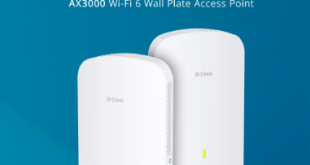As Microsoft’s support for Windows 10 draws to a close and more pressure mounts on Windows 11 adoption, VARs, MSPs and channel partners are facing a perfect storm of warranty risks, hardware compatibility concerns, and client skepticism. Many are now putting in survival mode rewriting contracts, launching “warranty-rescue” services, and reclaiming trust.
Microsoft has published clear lifecycle expectations: feature updates for Windows 11 editions receive 24 months of support (Home, Pro) and 36 months for Enterprise/Education versions. This means older Windows 10 devices, especially those not meeting TPM 2.0, UEFI secure boot, or requisite CPU specs, are becoming legal or technical dead zones. Hardware vendors often refuse warranty support for devices modified or “stretched” beyond their supported OS envelope. Channel partners tell us that many clients still run Windows 10 in some cases, over three-quarters of their installed base. With the October 14, 2025 deadline looming, this places partners in a bind: clients expect seamless transition, but the underlying devices may not qualify for warranty claims if issues arise post-upgrade. One additional complication: Microsoft’s own Windows 11 media creation tool reportedly broke on Windows 10 version 22H2 just days ahead of the deadline — adding extra friction to mass upgrades.
The Channel Panic Mode: What VARs & MSPs Are Doing
Warranty-Rescue & Compatibility Audits
Several partners have launched new service lines to rescue at-risk devices. These include hardware audits (checking TPM status, CPU generation, BIOS/firmware compatibility), warranty-eligibility verification, and even liaison services with OEMs to salvage warranty coverage. Some firms are building dashboards that flag “warranty risk” devices for clients.
Segmenting Clients & Phased Migration Offers
Not all clients’ estates are the same. Partners are classifying endpoints into:
- “Green zone” — devices that pass Windows 11 specs and can be upgraded in place
- “Yellow zone” — devices that require firmware or minor modifications
- “Red zone” — devices that must be replaced, since warranty claims would fail
This segmentation helps partners propose phased migration plans, reduce capital shock, and limit liability. Many are leaning hard into “device-as-a-service” or leasing models to spread cost rather than forcing outright capital expenditure.
Short-Term ESU (Extended Security Updates) Bridging
As a stopgap, partners are negotiating ESU contracts for critical devices that can’t yet be migrated. But the message is consistent: ESU isn’t a full solution, it’s a tactical bandage. The pressure is on to migrate before unsupported devices become high-risk cybersecurity liabilities.
Contract Rewrites & Liability Clauses
Some VARs are revising contracts to carve out warranty-denial risk. In new deals, clients may be required to accept that hardware warranty failures on non-compliant or out-of-spec machines won’t automatically count against the service provider. Transparency is becoming a defensive necessity — rather than letting clients assume “everything is covered.”
Building Buffer Stock & Rapid Swap Programs
In high-value accounts, partners are stocking compatible replacement machines so that when a device fails post-upgrade and the OEM refuses warranty coverage, the partner can swap it quickly. This minimizes downtime and preserves client confidence.
The Stakes Are High
Every device still running Windows 10 after support ends is a ticking liability for both client and MSP. Cybersecurity threats don’t pause, and vulnerabilities in unsupported OSes are lucrative targets. Analysts warn that clients and partners who treat ESU as a long-term fix will eventually pay in breaches, clients leaving, or legal exposure. But there is upside: Partners who manage this transition well can shift from being mere providers to strategic modernization consultants. The window for differentiating on trust, transparency, and outcome orientation is open.
 Latest Technology News Today – Get Latest Information Technology Updates and Services Latest Technology News Today – Get Latest Information Technology Updates and Services
Latest Technology News Today – Get Latest Information Technology Updates and Services Latest Technology News Today – Get Latest Information Technology Updates and Services 









